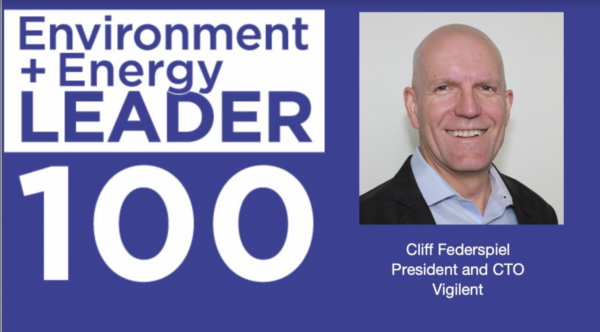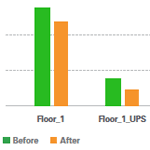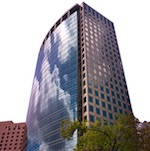Vigilent CTO and President Cliff Federspiel was named a 2021 Environment+Energy Leader for his efforts to develop a metric to quantify COVID-19 risk in occupied spaces. Environment+Energy Leader recently interviewed Federspiel about his work at Vigilent and how smart software can improve building performance. Here is an excerpt from that interview:

Please tell us about your job responsibilities and everyday activities.
Every day I think about how smart software can improve the performance of buildings. ‘Performance’ can mean many things, like improving the indoor environment, making it more comfortable and healthy for occupants, or making sure it keeps IT equipment in data centers running. It can mean reducing energy use and carbon emissions. It can mean finding HVAC equipment that is failing or about to fail. There are many types of buildings, and so many ways that software can make them run better and be more valuable. There is so much opportunity, and it keeps my brain busy.
Can you tell us about your biggest energy environmental challenge? How do you address it?
When it comes to buildings, a huge challenge is how to deliver an ideal indoor environment for people in office buildings or schools, or for IT equipment in data centers, and to also do that in a way that is also very efficient and sustainable. Honestly, what usually happens is that HVAC systems are operated just to avoid complaints, but doing this wears out the equipment faster, wastes energy and increases carbon emissions. This costs money, and is also contributing to our climate crisis.
With software you can get a good environment and also not be wasteful. But the software needs to be smart enough to learn the complexity of the facility, including the interactions between the HVAC system and various spaces. With that understanding, the software can make HVAC control decisions that deliver an ideal environment in the most efficient and sustainable way possible.
What was a successful project or implementation you worked on at your company that you can share?
What comes to mind is my realization during the Covid-19 pandemic that there was no way to measure virus infection risk in a building. And without measuring it, you can’t effectively manage it. Additionally, there was no consensus on how much ventilation was necessary to defend building occupants from COVID-19 infection.
I joined the Ventilation Team supporting ASHRAE’s Epidemic Task Force, and together we came up with the Non-Infectious Air Delivery Equivalent (NIADE) metric and a calculation method and tool to determine the minimum level of NIADE necessary to defend occupants from airborne infection. Our approach was motivated by the COVID-19 pandemic, but it applies to other airborne pathogens such as influenza. It takes into account factors like ventilation, temperature, humidity, filtration and more. NIADE gives building operators a concrete way to monitor and improve occupant health, and it helps them decide which mitigation steps they should take.
I’d like to credit the team leader Pawel Wargocki, and also Parham Azimi and Brent Stephens, who served with me on the ASHRAE Ventilation Team, and my colleagues Miya Keilin and Peter Varadi, who incorporated NIADE into the software value that Vigilent delivers to our customers.
What trends do you expect to see in the market in the next few years?
There is lots in the news these days about labor shortages. This was already a major issue in facility management, and it’s getting worse every year as the building stock grows and skilled building operators retire.
I see two things that are needed to address this problem. The first is the digitization and automation of buildings. Fortunately, most modern buildings now have the sensors and connected systems that are needed to monitor building performance. This same information can be used by smart software to make control decisions, allowing the building to operate autonomously. Fundamental tasks like ensuring a good indoor environment and energy efficiency can be done automatically.
Although basic tasks can be automated, it will be essential to have a core group of facility management experts to make more strategic decisions, such as where to make new investments to improve building performance even further. These decisions can be informed by analytics delivered by the software that I’ve been talking about.
Facility management roles are becoming more challenging, impactful, and rewarding. To fill these jobs, the industry needs to do more outreach to educational institutions so that young people are aware of the great opportunity that exists.
Tell us about a hobby or passion that has had an impact on you and your work.
I’m a competitive endurance cyclist. I compete in events that require training, planning, and execution. Making an impact in the buildings industry is similar to endurance athletics in that it also requires training, planning, and execution to achieve a successful outcome.



